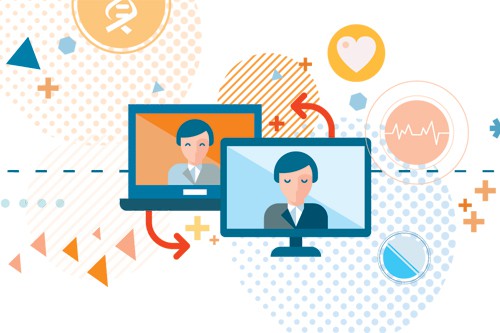
The telehealth industry is on the verge of a dramatic growth surge across all major markets, with the US, UK and Europe all looking to new healthcare technology to help improve outcomes.
A recent report by consultants Frost & Sullivan: ‘Pulse of Telehealth 2014’ finds that the increasing ageing population needs to manage and monitor multiple chronic diseases, which in turn intensifies the demand for remote patient monitoring – as well as mobile telehealth and telemedicine.
Both telehealth and telemedicine can be formed from a number of new technologies, but are fundamentally all designed to allow chronic patients to stay at home and gain digital access to their doctor.
This could be by arranging consultations via Skype, or electronic prescribing, or emailing results of their blood pressure or sugar levels garnered from health apps.
These systems are also designed to help with outcomes as real time data from patients can be streamed to their healthcare professionals (HCPs), meaning any problematic patterns or warning signs can be picked up in the data and acted upon swiftly.
This all has the added benefit of reducing cost to payers as if outcomes improve, fewer patients will need extra hospital care, and having online consultations can cut down GP visits.
In fact recent telehealth trials from the UK have suggested that it can reduce mortality by 45% and emergency admissions by 20%, while also improving patients’ quality of life.
Frost & Sullivan’s reports found: “The momentum for telehealth is building rapidly as the practice of providing remote clinical services becomes entrenched in every aspect of healthcare in North America. Technological advancements that deliver rich, connected platforms with high visual and audio quality add to the business case for telehealth.”
The firm’s study, which was based on interviews conducted with key telehealth stakeholders in conjunction with an American Telemedicine Association annual meeting, found that telehealth videoconferencing will especially emerge as a suitable avenue for primary and speciality healthcare service delivery.
But despite this potential to transform healthcare, numerous barriers to adoption still exist. Lingering concerns about patient privacy and safety as well as insufficient public and private reimbursement policies curb the widespread uptake of telehealth, according to F&S.
In addition, users will have to face several ‘unknowns’ in terms of complex state provider licensing and regulatory issues, affecting market growth. The use of telemedicine will gather pace only when leading industry stakeholders establish new guidelines and break down regulatory and reimbursement roadblocks according to F&S.
“As the scope of telehealth expands, a number of technology and services vendors will make their entry into the market,” the report’s authors note. “Disease-specific vendors, in particular, will seek to capitalise on specialist shortages in critical areas such as mental health and neurology.”
Ceci Zak, COO of the DAS Healthcare Group, adds that there has been a “misalignment” of incentives among stakeholders that has been a “fundamental barrier” to progress in telehealth in the healthcare industry so far.
But Zak says that new digital tools have the potential to incentivise all parties to embrace this type of disruptive innovation. “In the US, virtual physician appointments via teleprescence offers greater convenience and control to consumers and reduces physician costs for insurers,” he says.
Growing numbers
As with any disruptive innovation, some groups are keener to take up telehealth than others, but the numbers are growing.
In 2012, healthcare providers remotely monitored 308,000 patients worldwide for congestive heart failure, COPD, diabetes, hypertension and mental health conditions. This is predicted to reach 1.8 million patients by 2017.
In the US, home care accounts for about 3% ($68bn a year) of national health spending, according to figures from consultants McKinsey.
In the UK, the former coalition government set up in 2012 the ‘3millionLives’ project that is seeing billions of pounds invested from the government to ensure telehealth programmes reaches three million patients by the end of the decade.
But whilst both investment and interest is growing, there are still concerns over just how effective telehealth and telemedicine can be, and the picture is confused by different study outcomes and doctors’ views on the projects.
In the UK, the British Medical Association has criticised the 3MillionLives project, saying it will increase workloads for GPs and will likely not help patients. However, the Royal College of GPs has backed the plans, sending misex messages to doctors in the country.
A recent US study published in the Archives of Internal Medicine has shown remote telemonitoring is associated with increased mortality in vulnerable patients.
The study looked at 205 elderly patients who had a high risk of hospitalisation and showed that there was a “significant increase” in the mortality rate over a year, with rates over 12 months for the telemonitoring group at 14.7%, compared with 3.9% for the usual care group.
The problem is that the technology is still in it infancy and has not been fully rolled out across any major healthcare system, meaning data capture will be based on small populations that can vary in outcomes.
What is more surprising are the doctors’ groups publicly coming out against the plans before they have been used in a real-world setting.
This may be more down to a culture within some healthcare systems that is naturally averse to new innovations. But the technology could prove integral to the needs of austerity hit payers and is likely to only increase in the future.




